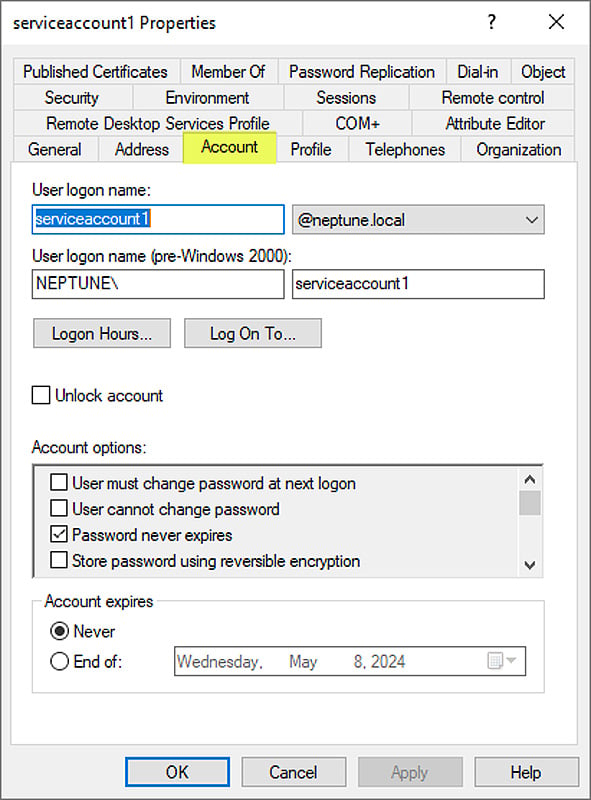Microsoft Active Directory tops the list of targets that attackers go after in the enterprise. It’s generally the core identity and access management solution for accessing resources in many environments, so Active Directory compromise can lead to catastrophic consequences.
It can allow attackers to access sensitive information, launch ransomware attacks, escalate privileges, establish persistent threats, and more.
Why is Active Directory an attractive target for hackers?
Active Directory environments contain a wealth of information for an attacker. In Active Directory, a threat actor can gain information about all users, groups, and permissions for the environment. It’s the central authentication service for the enterprise.
So, if an attacker can penetrate this core service, the old cliché is true: they gain access to the "keys to the kingdom.”
What tools and tactics do attackers use to target Active Directory?
Attackers can use many basic types of attacks to steal or crack weak or reused Active Directory passwords, including phishing attacks, brute force attacks, and password spray attacks.
Note some of the popular tools attackers commonly use to compromise AD environments:
- Mimikatz: A tool that extracts plaintext passwords, hashes, and Kerberos tickets from memory. Mimikatz can be used for pass-the-hash, pass-the-ticket, or to build Golden ticket attacks.
- BloodHound: Can reveal the relationships within an Active Directory environment to identify high-value targets. Also, attackers can learn the most vulnerable paths to compromise.
- PowerShell Empire: Allows attackers to exploit system vulnerabilities. Attackers can use it for lateral movement and gaining a foothold in the environment.
- Cobalt Strike: A tool that is often used to establish a command and control (C2) infrastructure.
- Hydra: The hydra tool can be used for brute-force attacks. It can use many protocols and services and it’s known for its speed to guess passwords.
- Metasploit: A popular tool for developing and executing exploit code against a remote target machine. It contains numerous modules for testing security vulnerabilities across an environment, including Active Directory.
- CrackMapExec (CME): A tool that helps assess the security of large Active Directory networks. It can be used for reconnaissance and for executing commands across multiple hosts.
- Responder: A LLMNR, NBT-NS, and MDNS poisoner. It can steal credentials on a network by impersonating services and capturing network traffic.
- ADExplorer: This is a legitimate tool from Sysinternals that, when used by an attacker, can allow them to explore, analyze, and manipulate Active Directory structures.
- Kerberoasting: A method of attacking Microsoft's Kerberos authentication protocol to crack the passwords of service accounts in Active Directory. Attackers can use tools like Impacket or Rubeus to perform Kerberoasting attacks.
What makes Active Directory an easy target?
Several things can combine to make an Active Directory an easy target. These break down into several different categories, including the following:
Weak and reused passwords – End users left without policies for proper password enforcement tend to choose weak passwords that are easy to remember. Even with a strong password policy in place, they may still reuse passwords leading to further risk. These weak and compromised passwords are easy targets for brute force and dictionary attacks.
Scale and complexity of Active Directory infrastructure – Active Directory may have thousands of objects, OU's, service accounts, and many other components. There are lots of potential attack routes for hackers to exploit.
Failure to audit activities in the AD environment – Many organizations don't have the tools needed to monitor and audit Active Directory properly, leaving unmonitored vulnerabilities in place.
Unnecessary user accounts that are not maintained – There may be gaps in offboarding processes and unused service accounts that allow accounts to become stale or have dangerous passwords configured and set to not expire.

Excessive privileges assigned to user or service accounts – Instead of using role-based access control, users or service accounts may be given excessive permissions to ease provisioning. These accounts can be particularly dangerous if compromised.
However, all user accounts should be protected, as skilled attackers can escalate their privileges from any account.
How to make your Active Directory a difficult target
As we all know, proper security is about layers. It takes a multi-faceted approach. Organizations must do the basics, including proper security hygiene, configuration management, and lifecycle tasks for offboarding, etc. Businesses also need to think about the following to make their Active Directories more difficult to compromise:
- Regular audits and updates – These are essential for detecting misconfigurations, stale accounts, and patching vulnerabilities within Active Directory. It helps ensure compliance and security standards are met.
- Principle of least privilege - Limits user and process access rights to the minimum necessary. Reduces the attack surface and potential damage from compromised accounts.
- Strong password policies – Proper password policies enforce complex passwords to prevent brute-force and credential-stuffing attacks. It may include requirements for length, character variety, and prevents common passwords.
- Blocking breached passwords – While this is not something you can do by default with Active Directory, blocking breached passwords is essential to prevent users from using passwords that are known to have been compromised.
Boost your Active Directory security today
Securing an Active Directory environment is a combination of best practices, diligence in lifecycle and housekeeping processes, and using the right technical tools to secure the environment. While this approach is not infallible, it makes Active Directory a more secure and less desirable as a target for attackers.
Organizations can bolster the security of their Active Directory infrastructure with third-party solutions like Specops Password Policy, which extends the default capabilities of Active Directory password policies using existing Group Policy Objects (GPOs).
In addition, the breached password protection feature provides a way to continuously scan for over four billion passwords known to have been compromised.
Speak to an expert about how Specops Password Policy could fit in with your organization.
Sponsored and written by Specops Software.

Post a Comment Community Rules
You need to login in order to post a comment
Not a member yet? Register Now